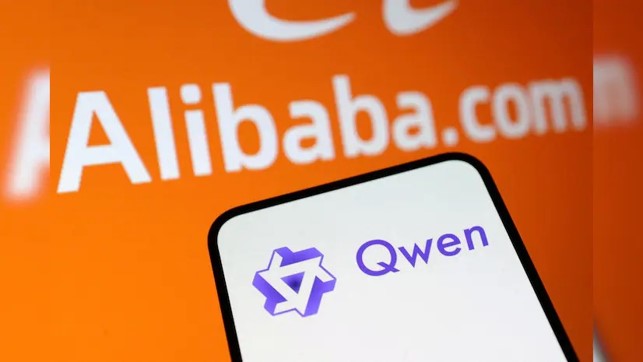Alibaba Qwen3 Model Debuts with Record-Shattering Context Window

Alibaba Surges Ahead: Qwen3's Ultra-Long Context Redefines Open-Source AI
In a major leap for the open-source AI community, Alibaba Cloud has announced the release of Qwen3, a large language model (LLM) boasting an unprecedented context window that rivals or exceeds the industry’s best[9]. Qwen3's hybrid reasoning abilities and massive memory unlock new use cases for enterprises and researchers, while sparking fresh debate on the global AI stage.
What Makes Qwen3 a Breakthrough?
The Qwen3 model is set apart by its ultra-long context window, allowing it to process up to 1 million tokens in a single prompt — a capacity historically reserved for leading proprietary models like Anthropic's Claude Sonnet 4 and OpenAI’s GPT-5[9]. This feature enables Qwen3 to ingest and synthesize information from entire books, complex codebases, or data-rich corporate documents without losing critical details. Alibaba’s decision to open-source Qwen3 marks a bold endorsement of transparency and accessibility in AI, inviting new applications and scrutiny in equal measure[9].
Technical Innovation and Industry Impact
Qwen3 employs a hybrid reasoning architecture, combining traditional transformer designs with advanced retrieval-augmented generation (RAG). This structure helps Qwen3 recall facts and context more reliably over extremely long prompts, reducing hallucination rates observed in prior models. Preliminary benchmarks reveal that Qwen3-72B, the flagship open version, delivers competitive accuracy in multi-turn dialog and document synthesis, matching or exceeding performance for many open-source peers[9]. Analysts note that this model is likely to accelerate AI adoption in academia, legal research, enterprise search, and software engineering, paving the way for broader experimentation with ultra-long context agents.
Open-Source: A Strategic Move in the Global AI Race
Alibaba’s release comes at a pivotal moment when the AI industry is fiercely debating the merits of open-versus-closed model development. By open-sourcing Qwen3 — and making its code, weights, and evaluation data widely accessible — Alibaba aims to build global mindshare and catalyze community-driven improvements. Experts believe this move will not only boost the capabilities of smaller companies but also position Alibaba as a leader among Chinese and global AI developers. For multinational enterprises concerned about privacy and regulatory compliance, the open nature of Qwen3 provides added flexibility and control.
Future Implications and Expert Insights
As ultra-long context models like Qwen3 become mainstream, their influence will extend far beyond traditional chatbots or virtual assistants. Potential use cases include:
- Enterprise-level knowledge management
- Automated legal and academic research synthesis
- Collaborative code analysis at scale
AI experts caution, however, that bigger context can create new risks around data leakage and computational cost. Yet, most agree that Qwen3 sets a new standard for open innovation. As Dr. Lin Zhen, Alibaba Cloud’s chief AI scientist, summarized: “Qwen3 was built to bridge the gap between human-scale understanding and machine-scale memory — we invite the global community to help take it further.”[9]
With Qwen3, Alibaba has fired a new salvo in the AI context window arms race, reshaping the possibilities for open-source language models and global collaboration.
How Communities View Alibaba’s Qwen3 Ultra-Long Context Model
Alibaba’s Qwen3 announcement with its record-setting context capacity has ignited lively debate on X/Twitter and Reddit, especially within the open-source and enterprise AI communities.
-
Innovation Enthusiasts (~40%): Many technologists and open-source enthusiasts, such as @karpathy and @soumithchintala, have celebrated Qwen3’s 1 million token context window, hailing it as "a huge win for open AI". They highlight the model’s transparency and potential to democratize access to powerful AI, especially for researchers and startups unable to afford proprietary solutions.
-
Skeptics and Critics (~25%): A significant group remains cautious, with X users like @alex_tech and posters in r/MachineLearning noting concerns over real-world performance, computational requirements, and the risk that open-sourcing such powerful models might accelerate misuse or escalate the LLM security arms race. Several Redditors also ask for proper peer-reviewed benchmarks and proof of stability in production settings.
-
Enterprise Adoption Watchers (~20%): Tech leaders and IT professionals, many in r/ArtificialIntelligence, are closely tracking Qwen3’s release for its impact on cost-effective document summarization, codebase analysis, and regulatory compliance. Notably, AI builder @juliang_zhang wrote that "Qwen3 unlocks enterprise RAG at unprecedented scale."
-
Global AI Politics Observers (~15%): Commentators, including @jamieai and voices in international AI threads, see Alibaba's Qwen3 move as a strategic challenge to US/Western LLM dominance, framing it as evidence of Asia’s surging influence in next-gen AI.
Overall sentiment skews positive and anticipatory, with most agreeing Qwen3 raises the bar for open-source language models. Key figures in the open-source AI world have voiced support, but call for independent validation of Qwen3’s technical claims.